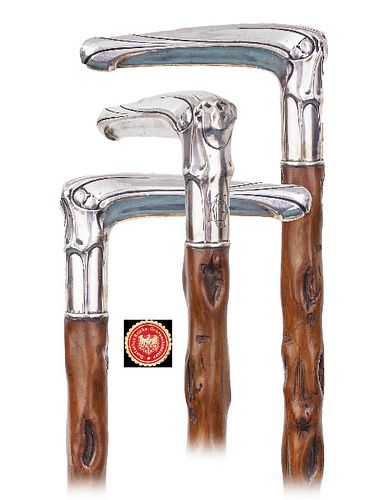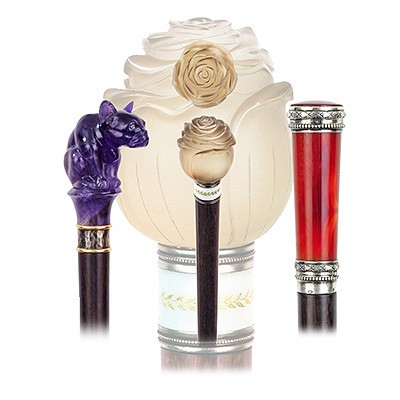Art Nouveau Day Cane
Lot 128
About Seller
Kimball Sterling
125 West Market Street
Johnson City, TN 37604
United States
Family-owned and family-run Johnson City Tennessee auction business for 25 years. Selling antiques and collectables for 38 years. Kimball M. Sterling, Inc. was founded and is owned by Kimball and Victoria Sterling, time and again, they have laid solid claim to world-wide attention and renown with an...Read more
Categories
Estimate:
$200 - $300
Absentee vs Live bid
Two ways to bid:
- Leave a max absentee bid and the platform will bid on your behalf up to your maximum bid during the live auction.
- Bid live during the auction and your bids will be submitted real-time to the auctioneer.
Bid Increments
| Price | Bid Increment |
|---|---|
| $0 | $10 |
| $100 | $25 |
| $500 | $50 |
| $1,000 | $100 |
About Auction
By Kimball Sterling
Dec 3, 2022
Set Reminder
2022-12-03 13:00:00
2022-12-03 13:00:00
America/New_York
Bidsquare
Bidsquare : The 2022 Cane Masterpiece Auction
https://www.bidsquare.com/auctions/kimball-sterling/the-2022-cane-masterpiece-auction-11295
The European Masterpiece Cane Collection Kimball Sterling kimballsterling@earthlink.net
The European Masterpiece Cane Collection Kimball Sterling kimballsterling@earthlink.net
- Lot Description
-Ca. 1900 -L-shaped silver plated handle fashioned in a stylish shape and embossed with decorative Art Nouveau elements. Simplified forms from nature, berries, leaves and sinuous curves helped the inspiration for this handle, which is personalized with the engraved initials “DG” of its first owner. In addition, the handle is struck with a “DRGM” mark for “Deutsches Reich Gebrauch Muster”, which means that the model was protected by law and “ALPACCA” for the so-called “New-Silver”, a sturdy copper, nickel and zinc alloy with a precious metal, silver-like bright shine. -This handle forges a link between late-nineteenth-century Arts and Crafts aesthetics and industrial production, and, with a one of a kind quirky grown oak branch shaft and a metal ferrule, plays all the artistic alchemy of canes. -The previous owner, a legendary collector from Illinois North Shore, who favored this cane for long years in his extensive collection, always wanted to see an erotic touch in the natural structure of its shaft. He often successfully triggered with it enthusiastic and never-ending walking stick discussions. -H. 4 ½” x 2 ¾”, O.L. 37” -$200-$300 -D.R.G.M., or sometimes DRGM, is not a German patent. It was instead a way for inventors to register a product’s design or function in all states within Germany. -From 1891 to the beginning 1950’s, products manufactured in Germany might have been stamped with this D.R.G.M. designation, if the manufacturer opted not to pay the outrageous patent fees that Germany was charging, but instead chose to copyright their product’s intended way of use, or design. This copyright was initially for a period of 3 years, with an option to extend it for another three additional ones. This gave the copyright owner a maximum of 6 years protection. -German patents were outrageously expensive, and many manufacturers could not afford the fees to register a full patent (fees for German patents were 36 times more than American patent fees). Those that could afford a German patent, had their products stamped with D.R.P. or DRP, which stands for Deutsches Reichspatent. Such a patent granted the patent holder a full 15 years protection.
- Shipping Info
-
Each auction has different shipping terms but the buyer always pays. Shipping will be delayed in this auction due to delay of customs.Canes:After payment has been received we will contact you.
- Buyer's Premium
-



 EUR
EUR CAD
CAD AUD
AUD GBP
GBP MXN
MXN HKD
HKD CNY
CNY MYR
MYR SEK
SEK SGD
SGD CHF
CHF THB
THB



















